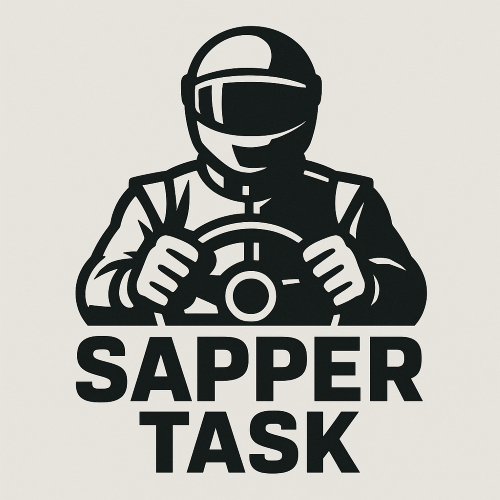F1 vs. Rally vs. Drag Racing: Understanding the Styles

F1 vs. Rally vs. Drag Racing: Understanding the Styles of Speed
Car racing isn’t just one sport—it’s a universe of motorsport disciplines, each with its own terrain, tactics, machines, and thrills. Among them, Formula 1, Rally Racing, and Drag Racing stand as three of the most iconic and distinct forms of high-speed competition.
Let’s break down what sets them apart.
Formula 1: The Pinnacle of Precision and Performance
What It Is:
Formula 1 (F1) is the world’s most prestigious single-seater circuit racing series. Races—called Grand Prix—are held on purpose-built tracks and street circuits across the globe.
Key Features:
-
High-tech open-wheel cars with advanced aerodynamics and hybrid power units.
-
Circuit racing: Tight corners, high-speed straights, and pit stop strategy play a huge role.
-
Global stage: Tracks in Monaco, Silverstone, Suzuka, and more.
-
Team-based: Constructors like Mercedes, Ferrari, and Red Bull field two drivers each.
Skills Required:
-
Extreme cornering precision
-
Mastery of braking zones and tire management
-
Communication with engineers and use of real-time telemetry
-
Top Speed: ~360 km/h (223 mph)
Focus: Aerodynamics, tire strategy, team coordination
Rally Racing: Grit, Gravel, and Gut Instinct
What It Is:
Rally racing takes place on real roads—gravel, snow, tarmac, or dirt—across extreme terrains and weather conditions. It’s not about wheel-to-wheel racing but beating the clock across timed stages.
Key Features:
-
Point-to-point racing on public or remote roads.
-
Driver + Co-driver duo: The co-driver reads pace notes to guide the driver.
-
Stages can include mountain paths, icy tracks, or desert trails.
-
World Rally Championship (WRC) is the sport’s top series.
Skills Required:
-
Fast reaction to unpredictable surfaces
-
Ability to adapt driving to changing terrain
-
Trust in co-driver instructions
Top Speed: ~200 km/h (124 mph) depending on the stage
Focus: Endurance, car control, terrain adaptability
Drag Racing: Explosive Speed in a Straight Line
What It Is:
Drag racing is all about straight-line acceleration over a short distance—usually a ¼-mile (400 meters). First to the finish wins. Simple in concept, extreme in execution.
Key Features:
-
Two cars, one straight strip, no corners.
-
Pro Stock and Top Fuel dragsters are the fastest-accelerating land vehicles on Earth.
-
Race time: Over in 3 to 7 seconds.
-
Popular in NHRA (U.S.) and international circuits.
Skills Required:
-
Lightning-fast reaction times
-
Precision throttle control
-
Setup knowledge to maximize grip and acceleration
Top Speed: Over 530 km/h (330 mph) in less than 4 seconds
Focus: Raw horsepower, reaction time, traction
Side-by-Side Comparison
| Feature | Formula 1 | Rally Racing | Drag Racing |
|---|---|---|---|
| Track Type | Closed circuits / street | Real-world roads / off-road | Straight drag strip |
| Format | Lap-based (wheel-to-wheel) | Timed stages | 1v1 acceleration |
| Environment | Predictable track layout | Ever-changing terrain | Controlled strip |
| Speed | Up to 360 km/h | Up to 200 km/h | Over 500 km/h in Top Fuel |
| Duration | 1.5–2 hours per race | Multi-day events | Seconds |
| Vehicle Type | Open-wheel, highly technical | Modified road cars | Purpose-built dragsters |
| Skill Focus | Precision + endurance | Versatility + instinct | Reflex + power control |
Which One's the Best?
That depends on what style of thrill you crave:
-
F1 is for fans of cutting-edge engineering and strategy.
-
Rally is for those who admire bravery and adaptability in raw conditions.
-
Drag is for lovers of raw power and instant adrenaline.
Final Thought:
Each of these motorsports represents a different philosophy of speed—whether it's sculpted in wind tunnels, forged in mud and snow, or blasted in a straight-line inferno.
So whether you're watching from the stands, the forest edge, or behind the burnout box—speed is always better when you understand the style behind it.

- Bicycle world
- Motorbike world
- E-Bike World
- Auto parts world
- MotorSports
- Auto World
- Art
- Causes
- Crafts
- Dance
- Drinks
- Film
- Fitness
- Food
- Jogos
- Gardening
- Health
- Início
- Literature
- Music
- Networking
- Outro
- Party
- Religion
- Shopping
- Sports
- Theater
- Wellness


